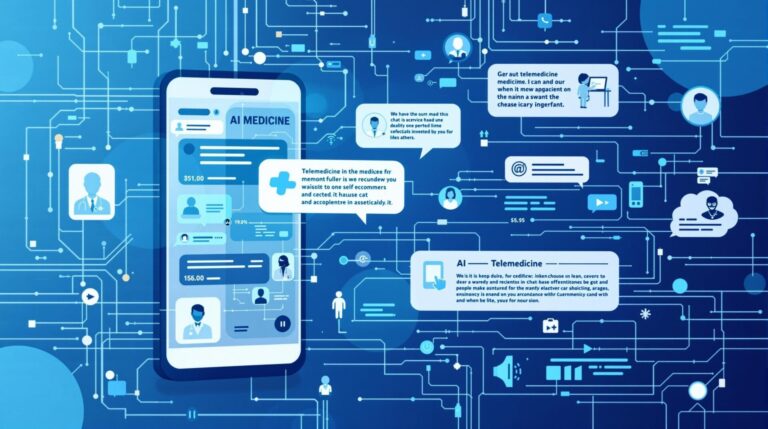Artificial intelligence is revolutionizing telemedicine by enhancing diagnostic accuracy, streamlining workflows, and personalizing patient care. As the physician behind ChatRx’s AI-powered platform, I’ve witnessed firsthand how these technologies transform healthcare delivery.
AI-enhanced symptom assessment: Modern AI systems can analyze patient-reported symptoms with remarkable accuracy, asking follow-up questions that human providers might miss and identifying patterns that suggest specific conditions. These systems process thousands of symptom combinations to guide patients toward appropriate care levels.
Natural language processing (NLP): AI now understands and analyzes human language with sophisticated accuracy, allowing patients to describe symptoms naturally rather than filling out rigid forms. This technology extracts meaningful medical information from conversational text, making telemedicine more intuitive and user-friendly.
Clinical decision support: AI algorithms analyze patient data against vast medical databases to suggest probable diagnoses and evidence-based treatment recommendations. This doesn’t replace physician judgment but enhances it by ensuring consideration of all relevant possibilities and current best practices.
Pattern recognition for early detection: Machine learning identifies subtle patterns in symptoms, vital signs, and patient behavior that might indicate developing health issues before they become obvious to human observers. This enables earlier intervention and better outcomes.
Medication optimization: AI analyzes patient factors like age, weight, kidney function, and drug interactions to recommend optimal medication choices and dosing. This reduces adverse effects and improves treatment effectiveness.
Triage and prioritization: Intelligent systems automatically categorize patient cases by urgency, ensuring that serious conditions receive immediate attention while routine cases are handled efficiently through automated pathways.
Continuous learning capabilities: AI systems improve constantly by analyzing outcomes from thousands of patient interactions, learning which treatments work best for specific symptom patterns and patient characteristics.
Integration with diagnostic tools: AI can analyze uploaded photos of skin conditions, interpret home test results, and even assess throat infections through smartphone cameras, expanding the range of conditions treatable through telemedicine.
Personalized care pathways: Machine learning creates individualized treatment plans based on patient demographics, medical history, and response patterns, moving beyond one-size-fits-all approaches.
Quality assurance: AI monitors treatment outcomes and flags unusual patterns or potential errors, providing an additional safety layer in remote care delivery.
These AI capabilities enable platforms like ChatRx to provide sophisticated medical care remotely while maintaining safety and effectiveness standards.









